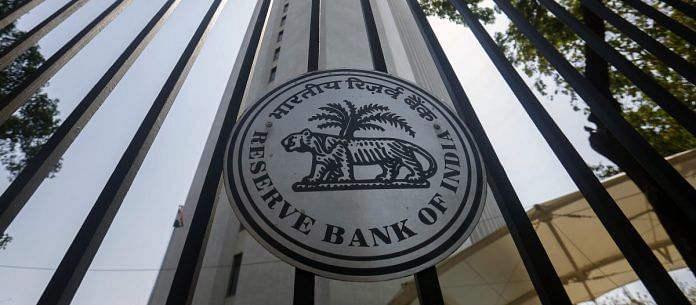If the April policy trends are anything to go by, the Reserve Bank of India is expected to lift rates at its meeting next month.
The interest-rate cycle in India is turning. The central bank may be set to tighten policy next week to keep inflation in check and stem the declines in the rupee, if the rate-market moves are any indication.
The Reserve Bank of India hasn’t tinkered with rates since August, and even cut inflation projections last month, raising expectations that borrowing costs would remain on hold. But a surprising hawkish tilt revealed in its April policy minutes and the recent spike in oil has boosted speculation the authority may lift rates at its June 6 meeting.
“Front-end bonds are fully pricing in a 25-basis point hike in June,” said Suyash Choudhary, head of fixed income at IDFC Asset Management Co. in Mumbai. “Even accounting for some higher supply absorption premium, one can say that a 75-basis point increase seems to be comfortably discounted over the next year.”
Here are four charts that show how markets preparing for a potential tightening:
The gap between the 10-year government bond yield and the RBI’s benchmark repurchase rate widened as much as 190 basis points earlier this month, the most since 2013. It stood at 176 basis points on Tuesday.
“The spread typically widens at the start of the tightening cycle,” said Vivek Rajpal, a rates strategist at Nomura Holdings Inc. “It indicates that the hike cycle is about to begin.”
The spread has tended to be a reliable indicator of a turn in interest-rate cycle in the past. The gap increased as much as 326 basis points in March 2010, before the RBI started raising borrowing costs. It widened to as much as 199 basis points a month before the authority began to tighten in September 2013.
Short-tenor bonds have underperformed recently, causing the yield curve to flatten. That’s because investors fear a near-term increase in interest rates as the price of oil — India’s top import — remains elevated after the recent slide. Standard Chartered Plc. expects the RBI to tighten by 25 basis points each, in June and August. HSBC Plc is also factoring in two increases.
“The current bear-flattening is due to rate hike expectations and lack of demand,” said Nagaraj Kulkarni, Asia rates strategist at Standard Chartered Bank in Singapore. The curve will steepen if the central bank sounds hawkish, and the market starts preparing for two to three increases, while a dovish hike may cause it to flatten, he said.
The spread between the price of one-year forward contracts, in which rates to be exchanged are agreed on 12 months prior, and the price of immediate swap payments has surged to the highest since 2011. That typically signals higher rates going ahead.
Offshore swap markets are pricing in the most rate hikes in India among Asia countries over the next year. The Philippines may increase the policy rate “some more” if economic data shows it’s warranted, Governor Nestor Espenilla said Monday. The country raised borrowing costs earlier this month, the first since 2014. Indonesia may be headed for a second hike in as many weeks on Wednesday to stem a rout in the rupiah.
–Bloomberg



